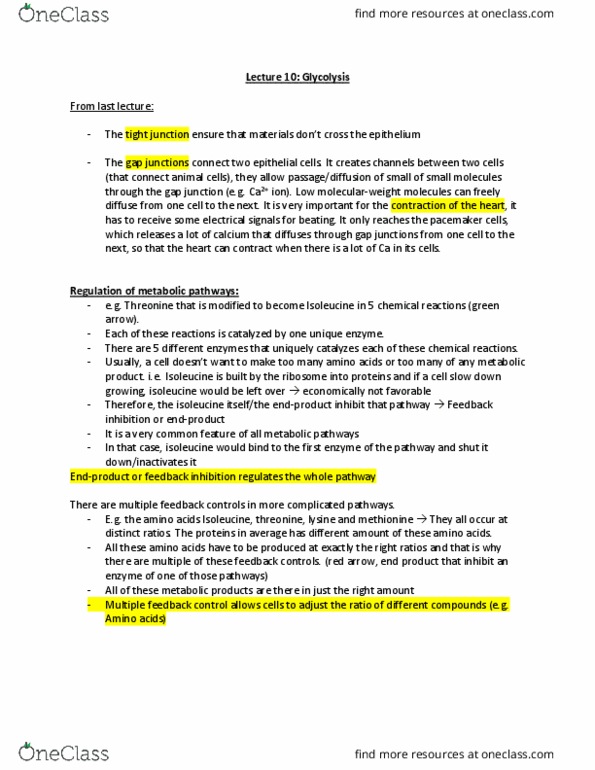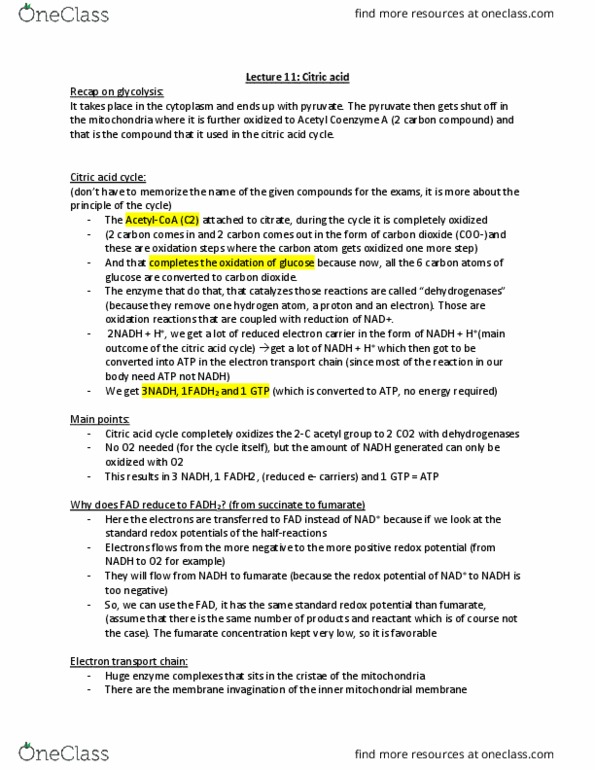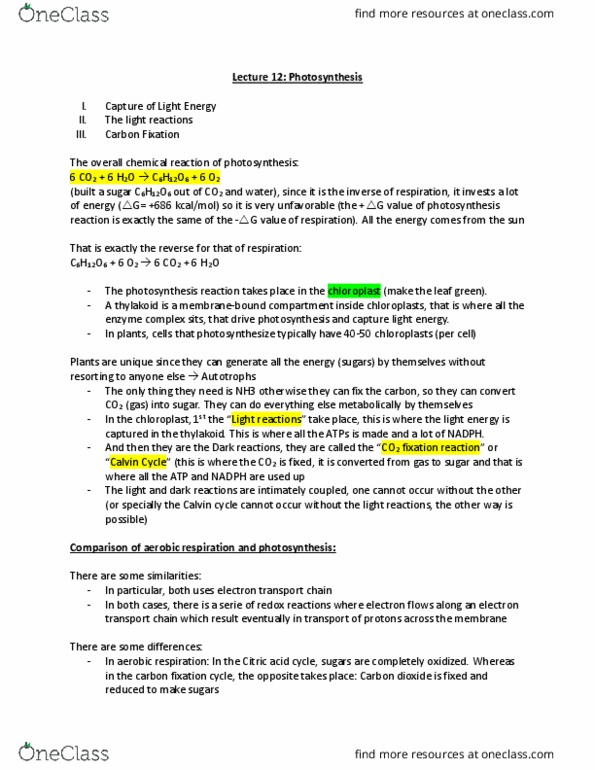BIOL 112 Lecture Notes - Lecture 11: Redox, Reduction Potential, Fumaric Acid
BIOL 112 verified notes
11/28View all
Document Summary
It takes place in the cytoplasm and ends up with pyruvate. The pyruvate then gets shut off in the mitochondria where it is further oxidized to acetyl coenzyme a (2 carbon compound) and that is the compound that it used in the citric acid cycle. Citric acid cycle: (don"t have to memorize the name of the given compounds for the exams, it is more about the principle of the cycle) And that completes the oxidation of glucose because now, all the 6 carbon atoms of glucose are converted to carbon dioxide. The enzyme that do that, that catalyzes those reactions are called dehydrogenases (because they remove one hydrogen atom, a proton and an electron). Those are oxidation reactions that are coupled with reduction of nad+. We get 3nadh, 1fadh2 and 1 gtp (which is converted to atp, no energy required) Citric acid cycle completely oxidizes the 2-c acetyl group to 2 co2 with dehydrogenases.






